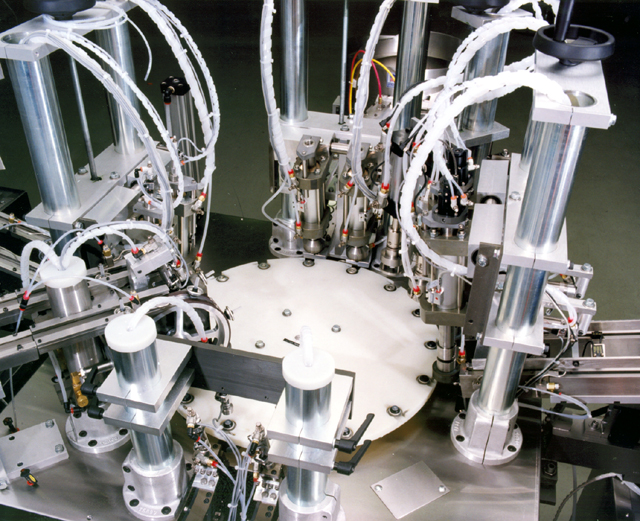
Automation is a key concept for Industry 4.0 and is a growing value among industrial companies.
According to a Fortune Business Insights publication, the global industrial automation market reached $157.04 billion in 2020 and is expected to reach $296.70 billion by 2026, almost double the amount of a year ago, thanks to machinery such as rotary assembly machines.
The interest of organizations in technologies that facilitate automation such as IoT, Artificial Intelligence (AI) or Blockchain is due to the benefits they bring. They represent outstanding advantages in many aspects, but especially in terms of time and cost savings.
In order to take advantage of these benefits, companies today need to carry out their processes through industrial automation systems
What is an industrial automation system?
Industrial automation systems, such as rotary assembly machines, are systems that are used to control and monitor a process, machine or device in a computerized manner that generally performs repetitive functions or tasks.
They are intended to operate automatically to reduce and improve human labor in industry. These systems replace the mechanical and repetitive tasks performed primarily by a person and the decisions he or she makes in the manufacturing process.
This is done through the use of logic programming commands and powerful machinery. Industrial automation systems bring several benefits to organizations.
Productivity. These systems make it possible to automate factories and industrial processes, enabling continuous mass production 24 hours a day, 7 days a week.
24 hours a day, seven days a week, which improves productivity and reduces assembly times.
- Quality. Through adaptive control and monitoring at different stages and industrial processes, these systems are useful to eliminate human error and thus improve the quality and homogeneity of the products offered. The yield is not reduced after several hours of continuous work.
- Greater consistency. Machines and computers work in a constant and continuous rhythm. Therefore, automated production processes have greater duration, stability and robustness when managed with an automation system.
- Flexibility. Implementing a new task in a traditional production line involves hours or days of user training. On the other hand, with an automated system, reprogramming a robot or machine is a simple and fast process that provides greater flexibility in the production process.
- More accurate information. Automating data collection improves accuracy and reduces costs. This increased accuracy allows company managers to make better decisions.
- Safety. It is safer to use robots on production lines with hazardous working conditions for humans.
- Cost reduction. Although the initial investment in industrial automation systems can be quite high, the implementation of this technology will result in reduced data analysis costs.
In addition, thanks to this automated data analysis, the risk of machine failure and service interruptions is minimized.
- Improved working conditions. Workers in a factory where an industrial automation system has been implemented work fewer hours and devote their time to high value-added tasks.
- Increased added value. Automation systems, such as rotary assembly machines, free employees from having to perform tedious and routine functions. When the action of machines and computers frees employees from performing these functions, they can perform higher value-added tasks in other areas of the company that provide greater benefit.
- Improved human capacity. The systems that companies implement to automate their services not only perform the tasks that a human being would do, but are capable of performing functions that exceed the capabilities of a real person. They are better in size, weight, speed and resistance among other characteristics.
